Never has the health and well-being of any population been advanced through laws and practices that restrict access to health care, medicines, or new technologies. However, in overturning Roe v. Wade, the U.S. Supreme Court (SCOTUS), will now not only restrict access to reproductive health care, but will also fuel a public health syndemic, characterized by disease clusters that are shaped by social, economic, and political determinants that lead to health inequalities and injustices.
The Dobbs decision affects real people, with generational consequences in multiple realms for all Americans. It will also reset the political dynamics in the U.S., re-establishing the politics of reproductive care as a central, contested element of U.S. elections. The decision’s long-term consequences will not only include health and political impacts but will also have implications for economic mobility as well as for state fiscal spending.
What is the health care impact of restricting abortions?
Abortion restrictions do not decrease abortion rates. Globally, abortion rates are nearly the same in countries that prohibit them or have provided legal access, which is between 36 to 47 and 31 to 51 abortions per 1,000 women between the ages of 15 and 49. In the U.S., data from the Centers for Disease Control (CDC) report that abortion rates are highest among women in their twenties, and lowest for young people less than 15 and women 40 and older. Eighteen percent of pregnancies in the U.S. end in abortion.
Countries with legal pathways for abortion have, in comparison to countries without legal pathways, high rates of contraceptive use to help manage and reduce unintended pregnancies, and stronger health care systems with access to reproductive health care. Reducing access to abortions does not reduce the number of abortions, rather, it has the effect of reducing access to reproductive health care.
The SCOTUS decision will not end abortions, it will simply shift where they are happening and for whom.
The Dobbs decision delegates pathways to abortions to states without any guidelines. So, reducing access to reproductive health care will be decided by states. As we know, some states are already implementing “trigger” laws prohibiting abortion that came or will come into effect as a result of the overturning of Roe v. Wade. Others will use older, “zombie” laws, restricting abortion that were already on the books, prior to the original Roe v. Wade decision that legalized abortion in the U.S. And yet others will offer abortions and will codify that right either in new laws or in state constitutions. The momentum behind the shift in where reproductive health care will be available is also being accelerated by several major corporations such as Amazon, Disney, JP Morgan Chase, and Microsoft which have already communicated and are examining policies to cover costs for abortions in other states.
In this reproductive health rights tracker, we have captured current health indicators and rankings of states with no abortion restrictions, with abortion restrictions, and those with trigger laws for abortion restrictions. Of the 13 states that have an immediate trigger law, 9 of them rank number 30 or lower in overall state health using data from America’s Health Rankings. More than 10 of these states rank in the bottom half for public health and healthcare quality.
The Dobbs decision will relegate no-cost or lower cost reproductive services that are more commonly accessed and utilized by lower income women and women of color to those states that offer abortion care, and out of reach for those women without the means to access these services. In fact, in many states, the number of reproductive health clinics performing abortions has already declined, and more will disappear as a result of the Dobbs decision, further limiting access to primary health care and preventative screenings.
In states restricting access to abortions, the women most likely to face immediate negative health and socioeconomic consequences are low-income women and/or women of color. As we already know from more than two years of the COVID-19 pandemic, those communities which have historically and currently experienced exclusion in health care are more likely to die from treatable conditions; more likely to die during or after pregnancy and to suffer serious pregnancy-related complications; and more likely to lose children in infancy. The Dobbs decision will continue, if not exacerbate, these patterns.
In fact, one of the most important consequences of the Dobbs decision is that it reinscribes denial of access to reproductive health care as a form of racism and sexism. Forms of reproductive injustice from political malpractice began legally as early as 1873 Comstock Act which defined contraceptives as obscene and illicit. Through this law, the United States Postal system was used to track and police the distribution of contraception and limit the distribution of birth control by physicians only. And with low-income women and women of color less able to access regular medical care, reproductive health care also became a form of racism and sexism. Dobbs brings continues this legacy of health inequity. When we consider this in the context of a very thin social safety net, a lack of parental leave policies and adequate childcare, the U.S. will continue to cultivate the conditions for a permanent underclass of low-income families and families of color.
States most eager to restrict or prohibit abortions as a result of Dobbs will experience deeper health inequities and those health inequities will also have medium to long-term effects on the quality of a state’s workforce and on its expenditures on health care. Eight states in this category, have state level child well-being rankings above 30.
The quick movement by states to make abortions illegal will not only impact the health and well-being of the communities within those states, but in adjacent states where access to reproductive health will remain in place. For example, there has already been a notable increase in women traveling to New Mexico, a state that has been a leader in providing access to abortions and other reproductive health services. New Mexico’s healthcare system is already spread incredibly thin, so a stream of out-of-state residents visiting the state to utilize the reproductive health services may overwhelm the system and limit the ability of state residents to get the care they need.
In the immediate aftermath of the Dobbs decision, then, abortions are not ending. Rather, access to reproductive healthcare has been curtailed and re-apportioned by state, by race, and by income. This is where we are in 2022.
The Political Impact of Dobbs
While it is not unusual for SCOTUS decisions to be at odds with public opinion, the Dobbs decision abruptly reestablishes abortion as a central schism in American politics to be contested in elections, judicial appointments, and media.
With only 13% of the American population believing that abortion should be illegal in all circumstances, according to Gallup’s polling, the Dobbs decision is divergent from the views of the majority of the American public. This 13% is significantly lower than the 35% who believe abortion should be legal under any circumstances or the 50% who believe that it should be legal only under certain circumstances. When combined, a robust 85% of Americans believe that there are circumstances that should allow women to have access to an abortion.
Given these views on abortion, it is not surprising that an NPR poll conducted over the weekend found that a majority (56%) of Americans oppose the Supreme Court’s decision. Although women are (+5%) more likely to oppose the decision, the majority of both men and women stand in opposition to the decision.
The majority of Americans, regardless of race, also express support for providing access to legal abortion. According to Pew Research Center’s most recent data, however, there are important differences to note. Asian American (74%) and Black American (68%) respondents were more likely to agree with the statement that “abortion should be legal in all or most cases” compared to Latino (60%) and White (59%) respondents. There is a similar trend in the CMPS survey, with Black and Asian Americans being more likely to express that “abortions should remain legal in the United States” at 59% relative to Latino (53%) and White (50%) Americans. In a 2020 survey of Native Americans in New Mexico found that 81% of Native Americans agreed with the statement “women and families deserve to make their own healthcare decisions without government interference.” Native American leaders have voiced their opposition to this decision, noting that this may generate even more violence for Native American women.
Politically, it is clear that this issue will have a marked impact on the upcoming midterm elections. NPR’s recent polling in fact found that 78% of Democrats are more energized to vote following the decision, 24% higher than Republicans. Given that a slight majority of Americans in the poll said they would vote for a candidate who would support a federal law to restore the right to an abortion, the intense debate that lies ahead may provide a more competitive election season than was projected for Republicans. Beyond the midterms, it is clear that the Dobbs decision will be a central focus of political tension for decades to come. States will continue to be on the frontlines of that struggle, but so too, will pharmaceuticals, and the miserly social safety net policies that will be strained as so many families navigate an abrupt change in family planning and reproductive health care in this country.
The central policy question that will confront us, is how do we improve reproductive health care, rendering it more equitable, in the wake of Dobbs? For low-income women and women of color, in the short term, that will mean that local governments will have to improve access to telehealth, integrate reproductive care with other types of care and make it more accessible. It will mean improving sex education in schools and access to contraceptives, and it will mean boosting childcare and parental leave policies and subsidies. These are tall orders for local governments, but they will be in the frontlines of the new battle for health equity.
-
Acknowledgements and disclosures
We would like to acknowledge the assistance of research interns Jayce Hepley, Aila Rodriguez, and Taylor Trimble.
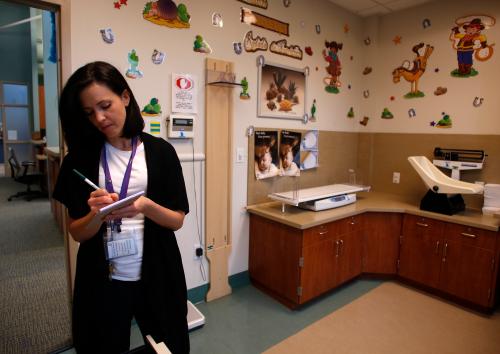
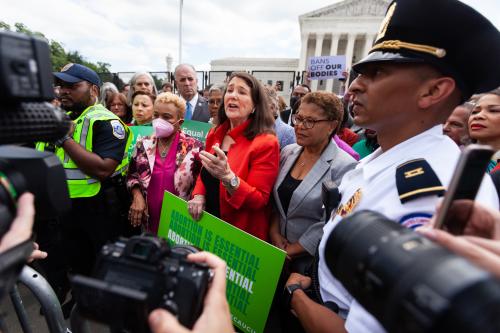
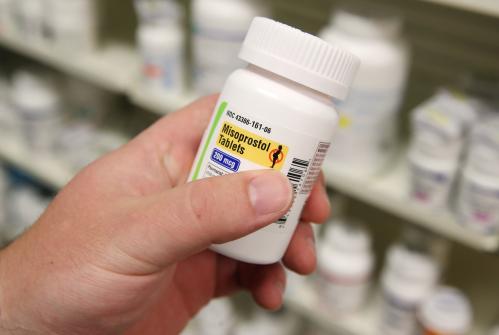

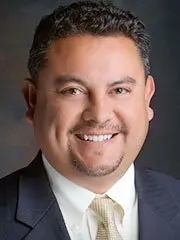


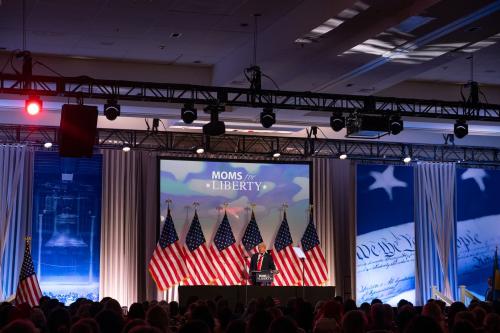
Commentary
Dobbs, another frontline for health equity
June 30, 2022